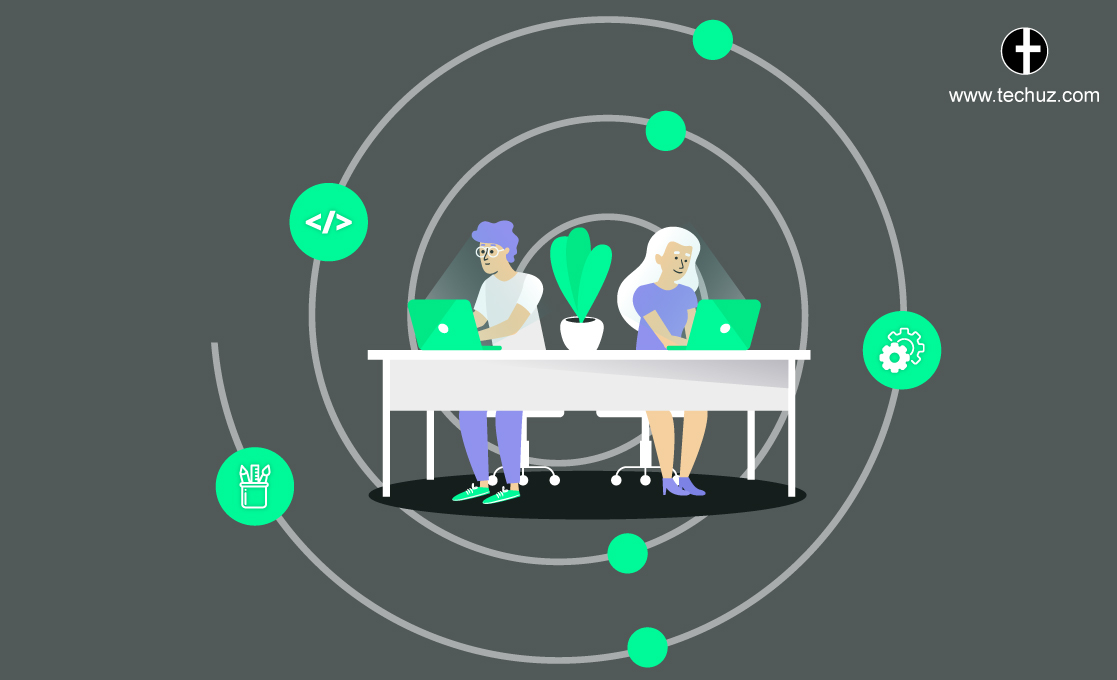Posted on
October 1, 2018
Updated on
March 26, 2024
Read time
 6 mins read
6 mins read
Spiral model was first introduced by Barry Boehm in 1986 and since then it has been one of the most preferred SDLC models for long-term and high-risk projects. This blog will discuss this prodigious and widely used SDL model in detail.
Software Development Model plays a significant role in the success of any project. Selecting the right SDLC model in accordance with the project needs ensures the timely delivery and quality development. On the flipside, an unsystematic and unplanned approach of developing the web application or software may have a miserable end.
Thus, this breeds the need for selecting the best fitting Software Development Methodology in compliance with the product and project needs. And today, we’ll discuss one such Software Development Life Cycle model – Spiral Model.
This SDLC model seems to be confusing for many. But in this blog, we have explained it in the simplest way possible. Even if you are unaware of any technological terms, by the end of this blog you’ll get clear of what is the Spiral Model Software Development Life Cycle and how does it work. This blog will cover the following:
We answer all these questions and more in this blog:
What is Spiral Model?
The spiral model was first introduced by Barry Boehm in 1986 in his paper – A Spiral Model of Software Development and Enhancement as an iterative and risk-driven model of software development.
It is one of the most preferred Software Development Life Cycle models for large and high-risk projects. The entire process of development is divided into four different stages which keep on repeating until the entire project is completed. These stages are Determining objectives, Evaluating risks, Developing the product and Planning the next phase. This entire process is represented in a spiral diagram and thus known as the spiral model.
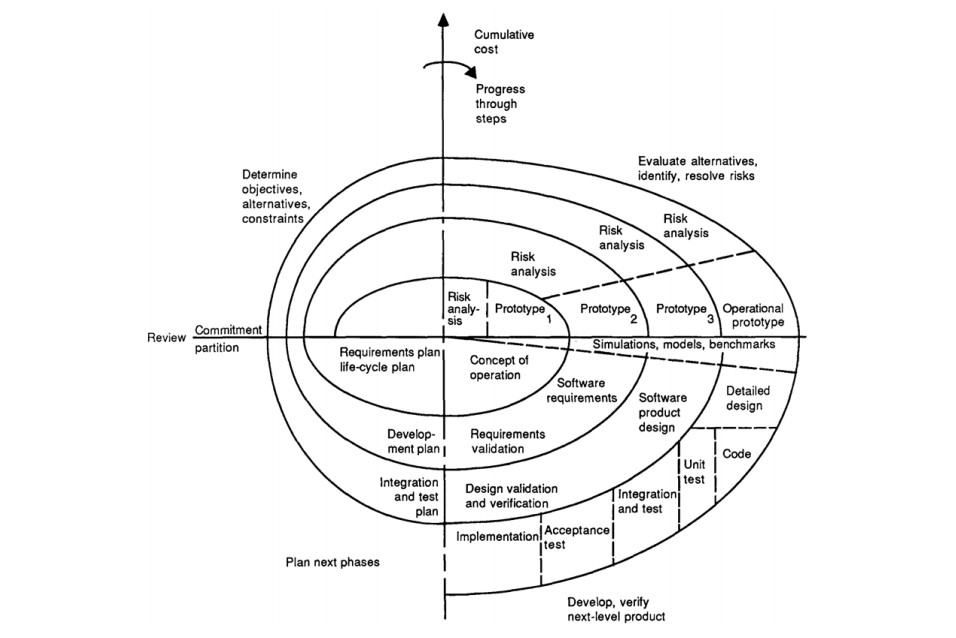
(Diagram of Spiral Model described by Boehm)
It is also known to be based on evolutionary development as the primary and important features are defined, developed and deployed first and then other necessary features are added with each the spiral or phases of the project.
The spiral model of Software Development is also known for being quite flexible as the process of defining objectives, analysing risks, development and planning are done separately for each phase of the project. It also caters room for enhancements with each iteration of the project. Moreover, it is highly risk-driven as the success of the project depends upon the proper risk analysis. So, it is imperative to have a special risk analysing expertise at each phase.
Understanding Each Quadrant of the Spiral
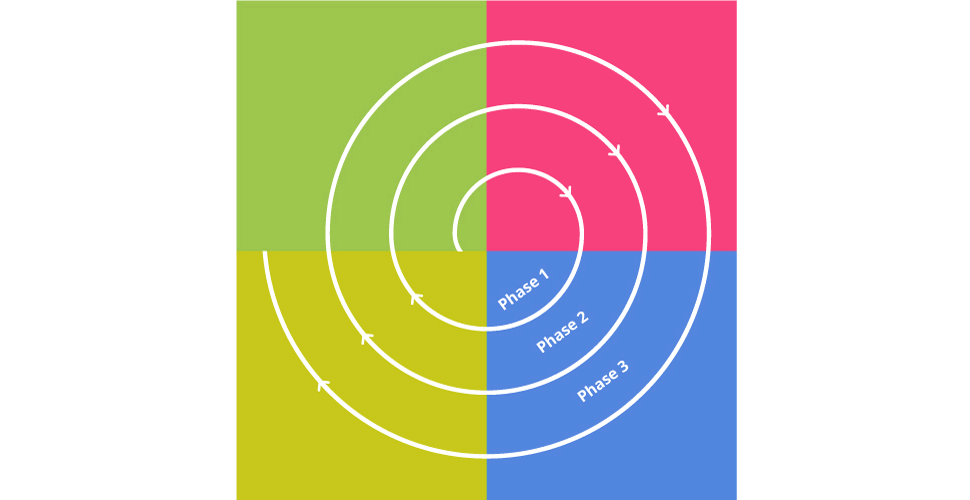
(Different quadrants of Spiral Model)
As you can see the figure above, the spiral model contains four different quadrant (stages) from which the web development process passes through repeatedly.
#1. Determine objectives, alternatives and risks
#2. Evaluate alternatives and resolve risks
#3. Development and testing
#4. Plan next phase
#1. Determining objectives, alternatives and constraints
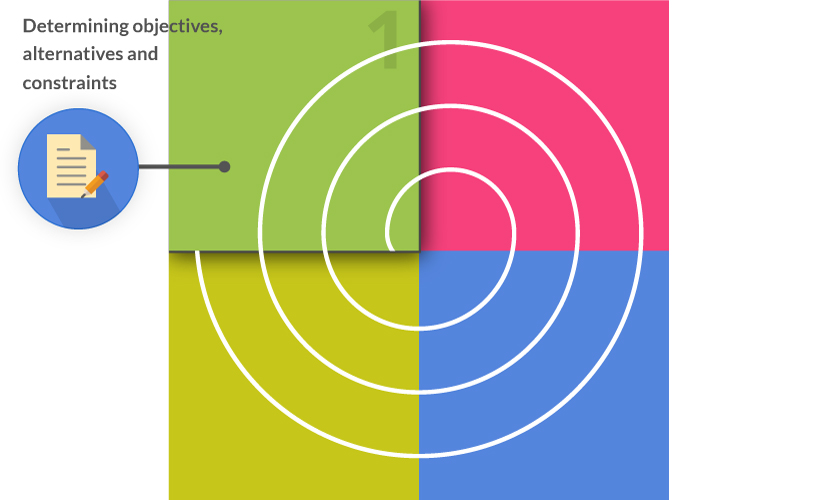
(Figure – 1st Quadrant )
This is the initial stage where all the requirements are collected, objectives are defined, constraints are evaluated and different alternative solutions for the development are proposed. This is the first and foremost stage of each repetitive cycle.
#2. Evaluating alternatives, identifying and resolving risks
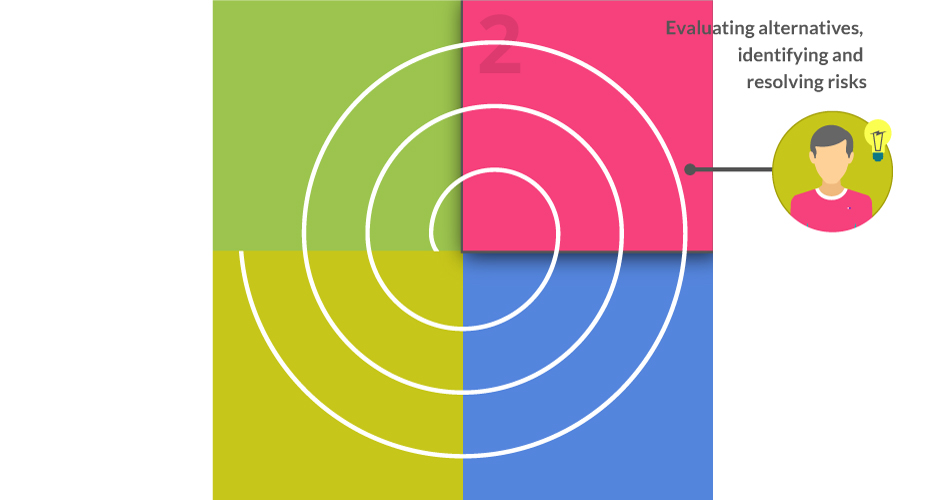
(Figure – 2nd Quadrant )
At this stage, all the proposed alternative solutions are evaluated and the best is selected for the development. Further, risks that can hinder the success of the projects are identified and strategies are formed to mitigate or entirely remove these roadblocks. Once everything is done, prototypes are built at the end of this stage.
#3. Develop, verify next level project
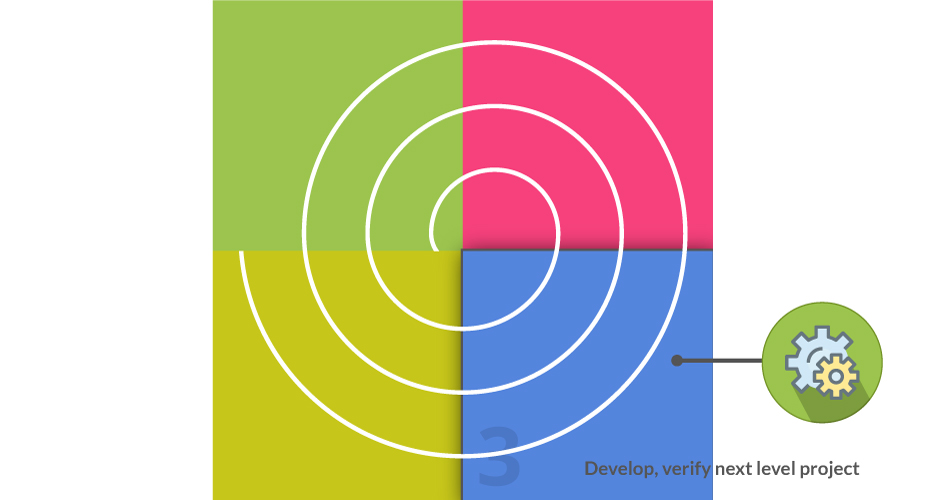
(Figure – 3rd Quadrant )<
The third quadrant is where the designing, development and testing of the web application happens. All the necessary development, using the selected technology and solutions are performed at this stage and with each iteration, a new and better version of the application is created.
#4. Evaluation and plan for the next phase
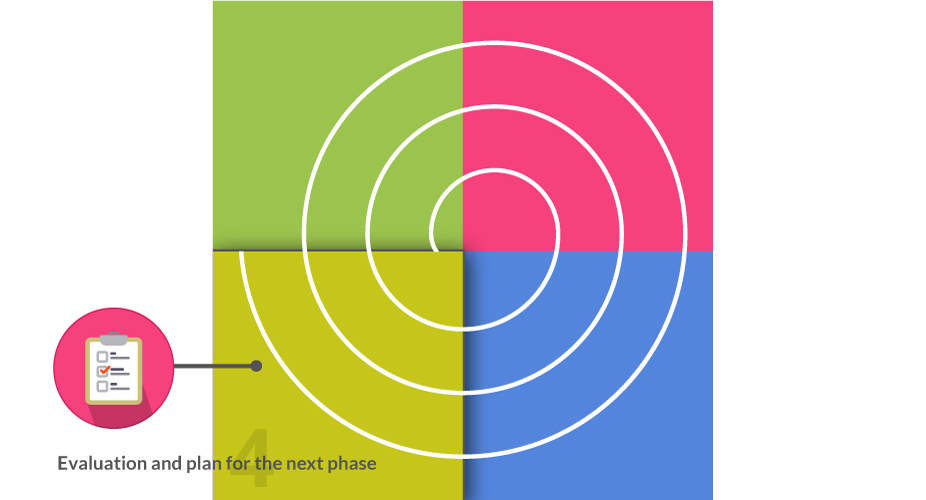
(Figure – 4th Quadrant )
This is the last stage of the spiral where the developed project is evaluated and new plans are formulated for the next phase.
What are the Benefits of the Spiral Model?
Flexible
This SDLC model is highly flexible as changes can be incorporated during the later iteration of the development.
Risk Management
With the spiral model, risks are analyzed at each and every phase of the product before moving forward. This helps to overcome or mitigate the possible risk.
Customer Involvement and Feedback
Customers are involved in each phase of the project until the project is completed. Thus, feedbacks can be collected to improve the next version of the project.
Perfect for a large project
The spiral model is considered to be the most preferable software development life cycle model for large and complex projects.
What are the Drawbacks of the Spiral Model?
Expensive
The spiral model can be quite expensive as it requires a high level of expertise for risk analysis. Even the projects take a huge amount of time to develop that can spike the overall expenses.
Quite Complex
The spiral model is comparatively more complex than other SDLC models. There are many phases, each passing through different quadrants that increase the amount and efforts and documentation process.
Time Management
One of the disadvantages of the spiral model is the time management as the number of phases are unknown.
Wrapping up
Why implementing the spiral model to your Web App Development is a good idea?
At the time when the spiral model was introduced the software applications prevailed but with the ever-increasing influence of web technologies, the web applications took over. Now, the applications are catered over the web which is highly functional, flexible and can provide the user with the utmost sophisticated features. These web applications can be as simple as a calculator but could also get advanced and feature-rich like “Google Analytics”. Thus, selecting the Spiral Software Development Lifecycle for your complex web-based application could reap you more benefits.
So, when you must use the spiral model for your web application?
As one of the leading web development company, we have been developing complex web apps for more than half a decade now. We recommend you to use the spiral model for your project if:
